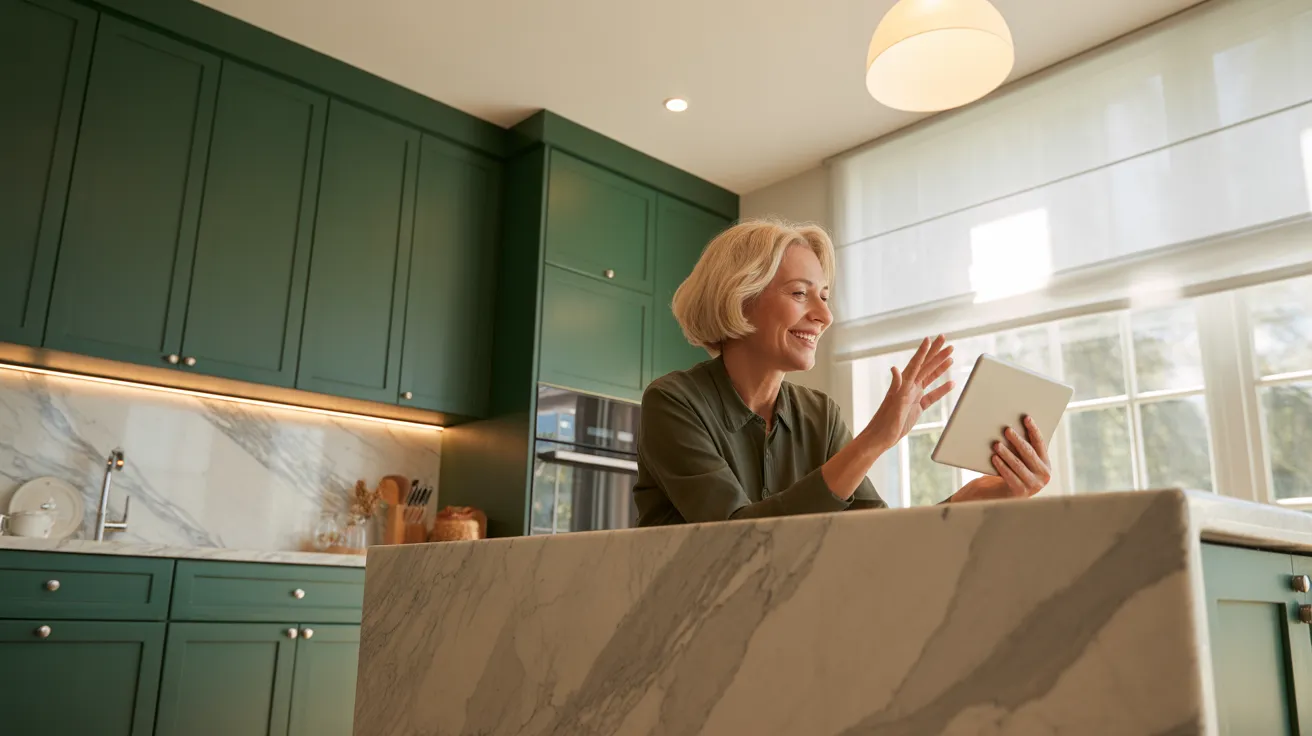
Frequently Asked Questions
Is a bold cabinet color like deep green a risky choice for my home’s resale value?
While white kitchens have long been considered the “safe” choice, the market is changing. Today’s buyers are often looking for homes with personality and high-quality, memorable design. A professionally designed kitchen with a sophisticated, bold color like Forest Canopy Green, paired with timeless materials like natural stone and quality hardware, can be a major selling point. The key is balance. If you commit to a bold cabinet color, ensure other elements like countertops and flooring remain classic and neutral to provide a broad appeal.
How can I incorporate these high-end kitchen trends on a more modest budget?
You don’t need a complete overhaul to tap into these trends. Focus on high-impact, lower-cost updates. Painting your existing cabinets is the most effective way to introduce the new color trend. Swap out dated hardware for solid brass or matte black pulls. Upgrade your backsplash; a few boxes of Zellige or handcrafted tile can completely transform the space. Finally, invest in a single statement piece, like a new, sculptural faucet or two beautiful pendant lights over your island or sink.
What are the best practices for mixing different metal finishes in a kitchen?
The matchy-matchy look is out. Mixing metals adds depth and a curated feel. The rule of thumb is to choose one dominant metal to act as your primary finish—for instance, brass for your faucet and cabinet hardware. Then, introduce a second, contrasting metal as an accent. Matte black is an excellent, versatile accent for light fixtures or window frames. Stainless steel for appliances can act as a neutral third element. Avoid mixing more than two or three finishes to keep the look cohesive rather than chaotic.
How do I care for trendy materials like unlacquered brass and natural stone countertops?
These materials require slightly different care but reward you with beauty that evolves. Natural stone like marble or quartzite should be professionally sealed upon installation and resealed periodically (typically every 1-2 years) to protect against stains. Clean up spills like wine or lemon juice promptly. For unlacquered brass, the beauty is in its natural patina—the warm, darker finish it develops with time and use. If you prefer a shiny look, it can be polished back to its original luster with a specialty brass cleaner. It’s a choice between a living finish and a pristine one.
Disclaimer: This article reflects design trend analysis and predictions. Personal taste and timeless design principles should always guide your decorating choices.
